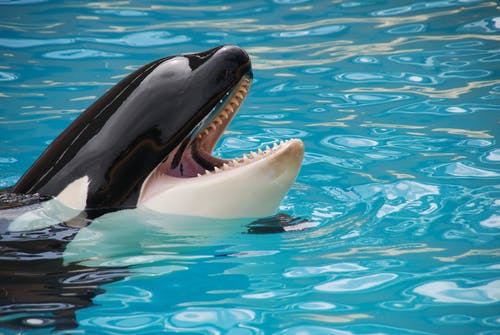
Marina, the African penguin, on a mini safari checks out a hypomelanistic crocodile safely from one facet of the glass on the Audubon Aquarium of the Americas in New Orleans. (Courtesy of Audubon Aquarium of the Americas/)What do you get when a tegu lizard, a penguin, and a sloth stroll into an aquarium? Some very valuable picture ops. Resulting from to COVID-19, creatures in captivity have much more alone time; so, zoos and aquariums have taken it upon themselves to offer little subject journeys for his or her residents.Which means beluga whales can have staring contests with penguins in Chicago, a sloth can chum round with dolphins in Texas, rescue puppies can uncover the deep sea in Georgia, and gorillas can expertise the crankiness of llamas in Canada. These meet-and-greets don’t simply add delight to folks’s social media feeds—additionally they give the wildlife concerned a break from the monotony.“These experiences could possibly be enriching for the animals by exposing them to distinctive objects, smells, sounds, and many others.,” Josh Plotnik, an animal habits knowledgeable at Hunter Faculty in New York Metropolis, says. “Zoos typically deal with offering enrichment for animals to stop boredom, scale back stereotypical habits, and to extend cognitive stimulation.”For comparatively pleasant and curious critters, these adventures provide a dose of leisure when there aren’t any guests round. Just like people, animals can develop uninterested in the identical surroundings and routines, particularly after they have fewer strangers to work together with. Within the wild, they will wander about and stumble upon different species, however in a zoo or aquarium, their circles are restricted to keepers and whoever’s subsequent to them in confinement.In fact, it’s vital to notice that we are able to’t learn animal minds, so there’s no approach to know what they’re feeling or processing sensory-wise. It’s additionally important that we don’t anthropomorphize the little guys: Animal habits is complicated and doesn’t at all times come throughout in the best way we’d count on.Analysis has proven, although, that zoo and aquarium enrichment does have concrete advantages. Whether or not it’s within the type of facilities like swimming pools or lakes, duties that make people to “work” for his or her meals, and even walks across the property, it supplies shops for these animals to be their pure selves. If creatures stay idle for too lengthy, they will endure from cognitive decline and begin exhibiting repetitive behaviors, together with pacing, neck twisting, over-grooming, or biting on bars. Wandering round different displays can present them with a little bit bodily and psychological stimulation. It might probably additionally assist fend off boredom within the animals behind the glass, who for logistical causes, can’t be taken out.However even when these interactions are largely constructive, it doesn’t imply each animal will take pleasure in visiting different members of its kingdom. Even with a usually adventurous species, some people is perhaps “neophobic,” Plotnik says, that means they’re simply freaked out by new sights and environment.Carmen, the Magellanic penguin, switches poles to satisfy Kayavak, the beluga whale, on the Chicago Shedd Aquarium. (Courtesy of Shedd Aquarium/)The important thing to a secure interplay on this case could be to maintain an eye fixed out for what the animal does after they make it to the rendezvous level. Are the penguins waddling enthusiastically, or hiding within the nook? Is a pet bounding round playfully, or moping about?One other large a part of the meet-and-greets is figuring out who to introduce to one another. Out within the wild, interspecies relationships can get bushy, particularly after they span completely different components of the meals chain. Some guests may appear to be a snack for the animals behind the glass.Take the charismatic African penguin, as an example. The hen is perhaps cool with getting up shut and private with an American alligator as a result of it gained’t essentially even register what it’s, says Bonnie Beaver, a veterinarian and habits scientist at Texas A&M College. However the identical won’t ring true if the wee feather ball locks eyes with a seal or shark.In that very same line of considering, it’s in all probability not clever to take a carnivorous animal on a stroll across the zoo, Beaver says. Controlling a giant bear or lion isn’t any easy process, and giving them open views (and sniffs) of potential prey objects would solely frustrate the people, she explains.However for the best animal with the correct disposition, zoo and aquarium journeys are like a trip to an thrilling new place. Think about your first time leaving your hometown to go to the massive metropolis, or your first spin on a Disney World trip, and even your first encounter with an elephant or giraffe.Not each particular person of a species loves an journey, however for those that do, “it’s good for the animal thoughts and welfare, which makes it good for us,” Beaver says. And since holidays are just about out of the query for people proper now, we would as properly dwell vicariously via our winged, scaled, and furry counterparts.

